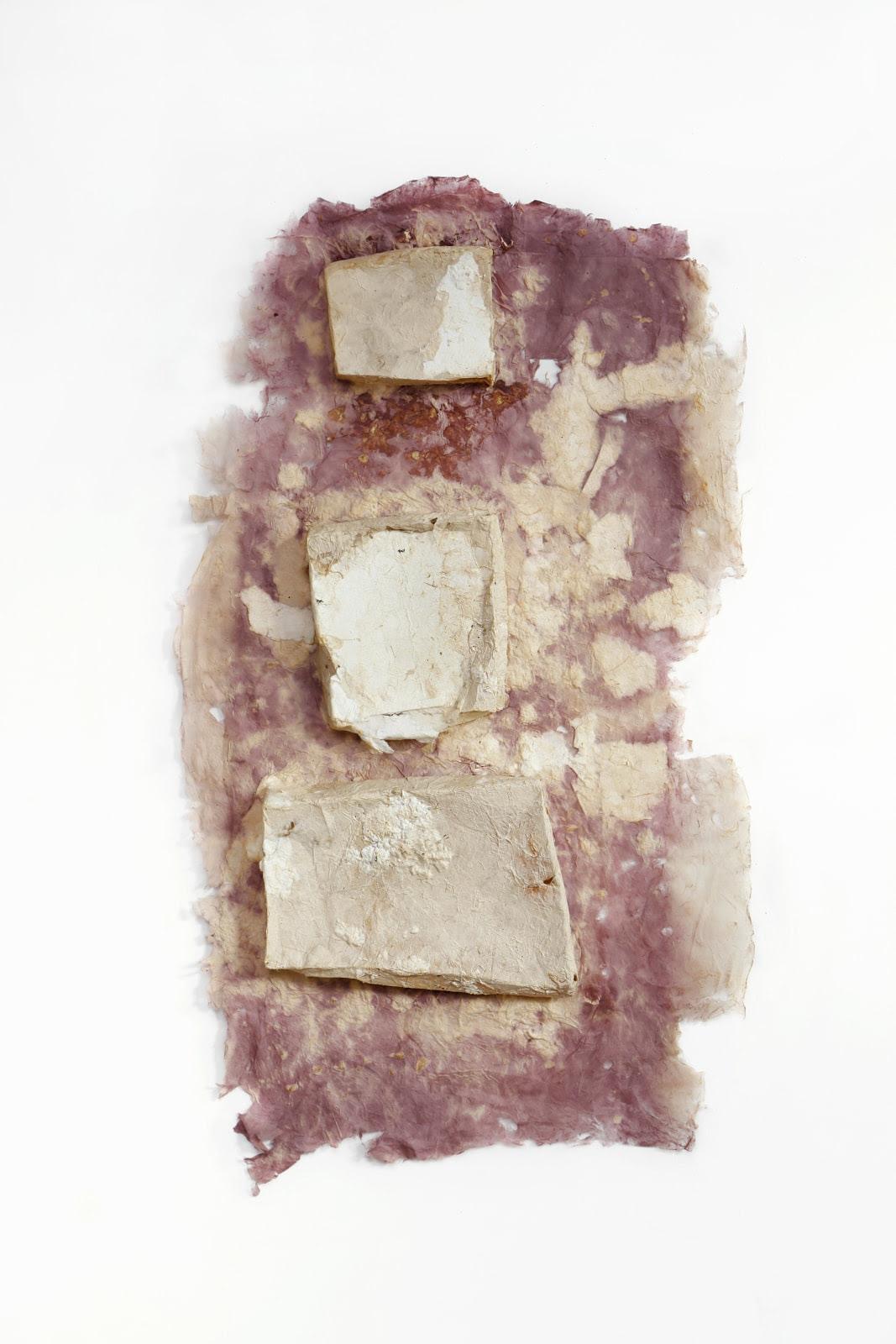Yasue Maetake’s work exhibited at IPPODO Gallery’s “Panta Rhei: Everything Flows”

Panta Rhei: Everything Flows
Works by Five Artists on Japanese Washi Paper
KAKU | Mami Kato | Yasue Maetake | Ryuji Taira | Kaori Teraoka
April 27 – May 17, 2023
VIP & Press Preview: April 27, 2-5 PM
Artist Talk: April 27, 5-6 PM
Opening Reception: April 27, 6-8 PM
On view from April 27th through May 17th, Ippodo Gallery presents selected washi artworks by five Japanese artists working with traditional paper in diverse modes. Panta Rhei: Everything Flows unveils new perspectives in Japanese paper, transforming the medium into voluminous crafted planes. Washi is a medium in flux, intertwined with Japanese cultural memory and each artist’s sensibility.
Washi (fibers of gampi, mulberry kozo and mitsumata, andthe hemp mashi, among many others) is treasured for its longevity, as the extraordinarily long, thin fibers—which are both durable and flexible—are slow to degrade. Japan’s paper tradition has maintained a broad and profound influence on art, culture, life, and architecture for a millennium.These five artists, working with the flat material in both two- and three-dimensions, demonstrate the beauty and tenaciousness of Japanese paper as a form of artistic expression.
KAKU (b. 1950, Tokyo, based in Sagamihara, Kanagawa, Japan) is an established career artist and designer whose iconic installation work has expanded the boundaries of traditional Japanese mediums for five decades. A subliminal sense of a shared consciousness guides KAKU’s technique and symbolism. Each work uses shaped wire and tens of thousands of coiled washi pieces; together, they become a living environment. Each fragment draws the viewer deeper into the undulating surface until the washi is totally enveloping. The tranquility in the absence of self echoes a Zen sensibility.
Mami Kato (Akita, Japan, based in Philadelphia) constructs her artistic vision from the washi material itself. Inspired by the structure of organisms submerged in water, such as cells and algae, Kato uses fine-tipped needles to dissect the patterns of the washi fibers, unraveling and reweaving each strand. Intrigued by biological science, Kato is immersed in the microscopic world, rearranging the material’s phenotypic expression to match her own imagination. Kato’s artistic philosophy aligns with Buddhist dharma: one life passes through her hands and is delivered into another.
Yasue Maetake’s (b. 1973, Tokyo, based in Brooklyn, New York) latest bas-relief series investigates the effect of chemical reactions on washi. Maetake repurposes the industrial waste from her sculpture studio, creating Anthropogenic geographies from melded man-made materials. The reliefs become a naturalistic timeline, connecting the age-old washi medium with the products of the modern era. She embeds oxidized erosion, such as fermented plants, metal patina, and wood stains, between the bonds of the hand-made paper layers. The character of the material—an Animistic spirit—reveals itself, creating new chroma and life.
A thousand gestures and subtle details converge in Ryuji Taira’s (b. 1960, Kumamoto, Kyushu, Japan) delicate photo prints on washi paper. Taira’s motifs—environmental microcosms—are brought to life by the nineteenth century style platinum printing technique imposed on gampi-washi. Taira translates dandelions and living creatures, using a large-format camera and silver halide film, into immortal images. Taira’s gampi-washi medium, which he prepares with lacquer over ten years, allows him to simultaneously preserve the natural essence of the symbolism and the transience of nature, defying decay.
Classically trained in nihonga painting, Kaori Teraoka (b. 1995, Shizuoka, based in Tokyo, Japan)uses mashi hemp paper in a meditative and rhythmic technique. Like a performance, each brush stroke corresponds to one second. Her gestures become a way of grounding body with mind, made with intention and focus even in the face of an uncertain world. Teraoka’s practice illustrates the relationship between physical action and the flow of time.
Ippodo Gallery is committed to creating shared empathetic, craft-oriented experiences through engagement with Japanese art and culture. We continue to showcase work by living artists that adheres to our mission to cultivate beauty with a consciousness of the fragility of nature and the strength of quiet serenity. Ippodo Gallery has worked directly with over 200 artists and held thousands of exhibitions over three decades. We are grateful to continue to bring contemporary Japanese fine art and sensibility to Western audiences. Keiko Aono founded Ippodo Gallery Tokyo in 1996, with two locations in the heart of Ginza and the residential area of Gotenyama. Daughter Shoko Aono opened Ippodo Gallery in New York in 2008, forging new connections with a global audience. Since then, she continues to witness the timeless cross-cultural impact of Japanese kogei art that transcends language.